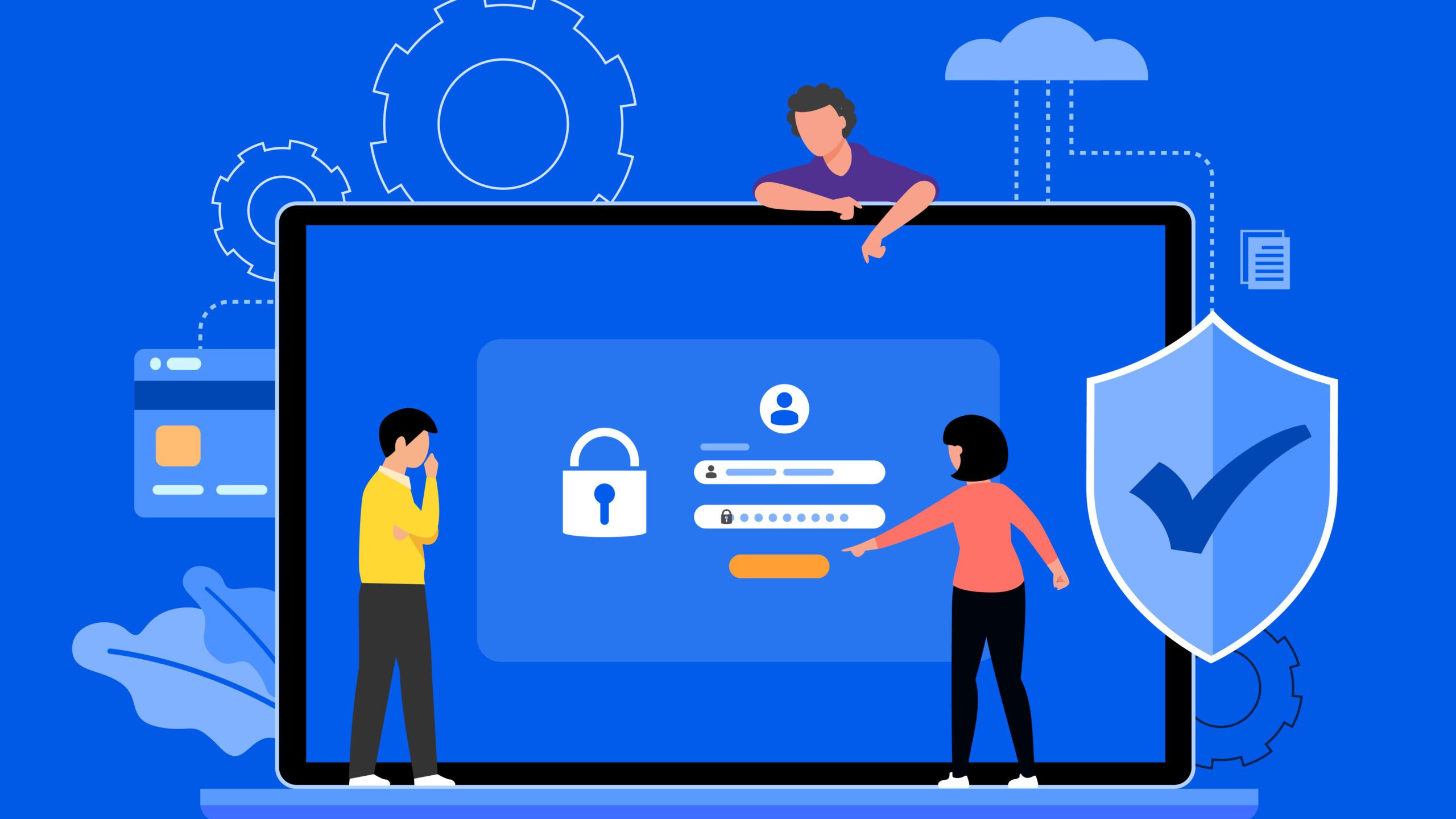What is Two-Factor Authentication?
Users must give two distinct authentication factors as part of the two-factor authentication (2FA) security procedure, also known as two-step verification or dual-factor authentication.
The implementation of 2FA improves the security of both user credentials and the resources that users can access. Single-factor authentication (SFA), in which the user gives only one factor, generally a password or passcode, offers a lower level of security than two-factor authentication. The first component in two-factor authentication techniques is a user-provided password. The second element is often either a security token or a biometric factor, like a fingerprint or facial scan. Reda about 2FA at www.techtarget.com
By making it more difficult for attackers to access a person’s devices or online accounts, two-factor authentication adds an extra layer of security to the authentication process. This is because, even if the victim’s password is compromised, a password alone will not be enough to pass the authentication check.
The use of 2FA to restrict access to confidential systems and data is not new. Online service providers are increasingly utilizing 2FA to prevent hackers from using user credentials after they have stolen a password database or obtained them through phishing scams.
What are Two Factor?
A person can be verified in a variety of ways utilizing multiple authentication techniques. The majority of authentication techniques currently in use rely on knowledge factors, such a conventional password, while 2FA techniques also include either a possession element or an inheritance factor.
Following is a list of authentication factors in roughly chronological sequence of computing adoption:
- A knowledge factor is something the user is aware of, such as a password, a PIN, or some other kind of shared secret.
- An item the user possesses, such as an ID card, a security token, a cellphone, a mobile device, or a smartphone app, is referred to as a possession element.
- An intrinsic aspect of the user’s physical being is referred to as a biometric factor or an inherence factor. Personal characteristics like fingerprints that have been verified by a fingerprint reader or other physical traits may be used to map these. Other often utilized inherence criteria include facial and voice recognition as well as behavioral biometrics like speech patterns, gait, and keyboard dynamics.
- A time factor restricts user authentication to a specific time window in which logging on is permitted and restricts access to the system outside of that window.
How does two-factor authentication work?
A security technique known as two-factor authentication (2FA) requires two independent forms of identification in order to gain access to something. Typically, the first factor is something you are aware of, such a password or PIN. A code given to your phone, a fingerprint, or a facial scan are examples of the second factor, which is something you have or are.
By adding an additional level of security to the login process, 2FA works. Even if an attacker has your password, they will need the second factor in order to access your account.
The use of 2FA can be done in numerous ways. Typical techniques include:
- Text message: A code is sent to your phone via text message. You must enter this code in addition to your password to log in.
- Authentication app: An authentication app generates a unique code every few seconds. You must enter this code in addition to your password to log in.
- Biometrics: You can use your fingerprint, face, or voice to log in. This is becoming increasingly common on smartphones and other devices.
Protecting your online accounts from illegal access is easy and effective with 2FA. All of your significant accounts, including your email, social media, and financial accounts, should have 2FA enabled.
Components of two-factor authentication
MFA in the form of two-factor authentication is used. It is technically in use whenever access to a system or service involves using two authentication factors. But utilizing two factors from the same group does not qualify as 2FA. For instance, requiring both a password and a shared secret is still regarded as SFA because both factors fall under the category of knowledge authentication.
Usernames and passwords are not the most secure method of authentication for SFA services. Password-based authentication has the drawback that it takes skill and care to generate and remember secure passwords. Passwords need to be protected from a variety of insider risks, including sloppy storage of sticky notes containing login information, outdated hard drives, and social engineering ploys. Passwords are also vulnerable to external threats, such as hacker assaults that use dictionary, brute-force, or rainbow table techniques.
An attacker can typically get past password-based security measures and take business data if they have enough time and resources. Due to their low cost, simplicity of usage, and familiarity, passwords continue to be the most popular SFA method. Read about our other post at bugify.in
Types of two-factor authentication
Tokens, RFID cards, smartphone apps, and other devices and services are all available to enable two-factor authentication (2FA).
Two categories of two-factor authentication products exist:
- tokens that are given to users to use when logging in; and
- infrastructure or software that recognizes and authenticates access for users who are using their tokens correctly.
Is two-factor authentication secure?
Users must submit two distinct factors as part of the two-factor authentication (2FA) security procedure in order to prove their identity. A code that is texted to the user’s phone or produced by an authenticator app is often required in addition to a password or PIN to accomplish this.
Single-factor authentication (SFA), which just needs a password or PIN, is much less secure than two-factor authentication (2FA). This is so that a user cannot log in without the second factor, even if the attacker knows the user’s password.
However, 2FA is not perfect. There are some known vulnerabilities that attackers can exploit, such as:
- Phishing attacks:
- SIM swapping
- Man-in-the-middle attacks:
2FA is still far more secure than SFA in spite of these flaws. It is significant to remember that there are variations among 2FA techniques. Compared to other methods, such as authenticator app-based 2FA, other approaches, including SMS-based 2FA, are more prone to assault.
Conclusion
2FA can be used to protect a wide variety of accounts, including email, social media, banking, and work accounts. It is especially important to use 2FA on accounts that contain sensitive information, such as financial data or personal records.
Here are some of the benefits of using 2FA:
- Reduced risk of fraud: 2FA can help to prevent fraud, such as identity theft and account takeover.
- Compliance: Many businesses and organizations require their employees to use 2FA for security and compliance reasons.
it gives you security so use it in your device













